Related Research Articles

The Irish Civil War was a conflict that followed the Irish War of Independence and accompanied the establishment of the Irish Free State, an entity independent from the United Kingdom but within the British Empire.

The Irish Army is the land component of the Defence Forces of Ireland. The Irish Army has an active establishment of 7,520, and a reserve establishment of 3,869. Like other components of the Defence Forces, the Irish Army has struggled to maintain strength and as of April 2023 has only 6,322 active personnel, and 1,382 reserve personnel. The Irish Army is organised into two brigades.
Events from the year 1922 in Ireland.
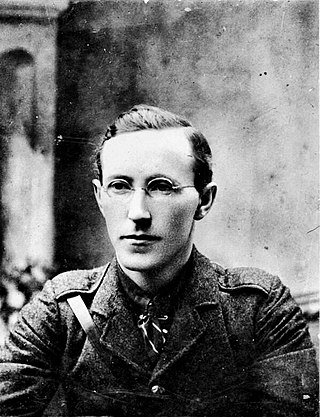
William Fanaghan Lynch was an Irish Republican Army officer during the Irish War of Independence of 1919–1921. During much of the Irish Civil War, he was chief of staff of the Irish Republican Army. On 10 April 1923, Lynch was killed whilst trying to escape an encirclement by Free State troops in south Tipperary.

The Irish Republican Army (IRA) of 1922–1969 was a sub-group of the original pre-1922 Irish Republican Army, characterised by its opposition to the Anglo-Irish Treaty. It existed in various forms until 1969, when the IRA split again into the Provisional IRA and Official IRA.
The Squad, nicknamed the Twelve Apostles, was an Irish Republican Army (IRA) unit founded by Michael Collins to counter British intelligence efforts during the Irish War of Independence, mainly by means of assassination. The Squad engaged in executing informants, police active in harassment of IRA personnel, enemy agents and worked in counterespionage.

Roderick O'Connor was an Irish republican who was Director of Engineering for the IRA in the Irish War of Independence. O'Connor opposed the Anglo-Irish Treaty of 1921 and was chairman of the republican military council that became the Anti-Treaty IRA in March 1922. He was the main spokesman for the republican side in the lead-up to the outbreak of the Irish Civil War in June of that year. On 30 June, O'Connor was taken prisoner at the conclusion of the attack by Free State forces on the Four Courts in Dublin. On 8 December 1922, he was executed along with three other senior members of the IRA Four Courts garrison. All four men were executed without trial or courts martial.
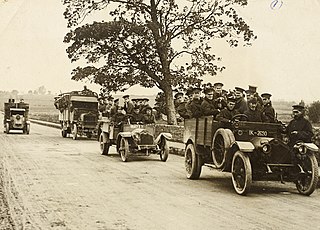
This is a timeline of the Irish War of Independence of 1919–21. The Irish War of Independence was a guerrilla conflict and most of the fighting was conducted on a small scale by the standards of conventional warfare.
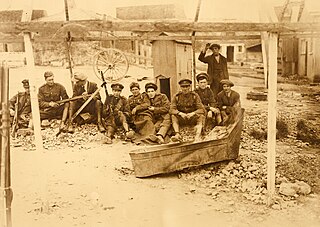
The Irish Free State offensive of July–September 1922 was the decisive military stroke of the Irish Civil War. It was carried out by the National Army of the newly created Irish Free State against anti-treaty strongholds in the south and southwest of Ireland.

The Battle of Dublin was a week of street battles in Dublin from 28 June to 5 July 1922 that marked the beginning of the Irish Civil War. Six months after the Anglo-Irish Treaty ended the recent Irish War of Independence, it was fought between the forces of the new Provisional Government and a section of the Irish Republican Army (IRA) that opposed the Treaty.

The executions during the Irish Civil War took place during the guerrilla phase of the Irish Civil War. This phase of the war was bitter, and both sides, the government forces of the pro-treaty Irish Free State and the anti-Treaty Irish Republican Army (IRA) insurgents, used executions and terror in what developed into a cycle of atrocities. From November 1922, the pro-treaty provisional later Free State government embarked on a policy of executing Republican prisoners in order to bring the war to an end. Many of those killed had previously been allies, and in some cases close friends, of those who ordered their deaths in the civil war. In addition, government troops also summarily executed at least 130 prisoners in the field. The executions of prisoners left a lasting legacy of bitterness in Irish politics.
Stephen Fuller was an Irish Fianna Fáil politician who served as a Teachta Dála (TD) for the Kerry North constituency from 1937 to 1943.
This is a timeline of the Irish Civil War, which took place between June 1922 and May 1923. It followed the Irish War of Independence (1919–1921), and accompanied the establishment of the Irish Free State as an entity independent from the United Kingdom of Great Britain and Ireland.

Paddy Daly (1888–1957) sometimes referred to as Paddy O'Daly, served in the Irish Republican Army during the Irish War of Independence and subsequently held the rank of major-general in the Irish National Army from 1922 to 1924.
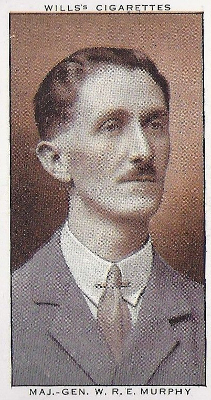
William Richard English-Murphy, DSO MC known as W.R.E. Murphy was an Irish soldier and policeman. He served as an officer with the British Army in World War I and later in the National Army. In the Civil War he was second in overall command of the National Army from January to May 1923. He was first Irish Commissioner of the Dublin Metropolitan Police and the last Commissioner of the force before its merger with the Garda Síochána in 1925. Thereafter he was the Deputy Commissioner of the Gardaí until his retirement in 1955.

The guerrilla phase of the Irish Civil War began in August 1922, when the forces of the Irish Free State took all the fixed positions previously held by the Anti-Treaty IRA. The IRA then waged a guerrilla war to try to bring down the new Irish Government and overturn the Anglo-Irish Treaty. This guerrilla campaign was ultimately defeated.

The National Army, sometimes unofficially referred to as the Free State Army or the Regulars, was the army of the Irish Free State from January 1922 until October 1924. Its role in this period was defined by its service in the Irish Civil War, in defence of the institutions established by the Anglo-Irish Treaty. Michael Collins was the army's first commander-in-chief until his death in August 1922.
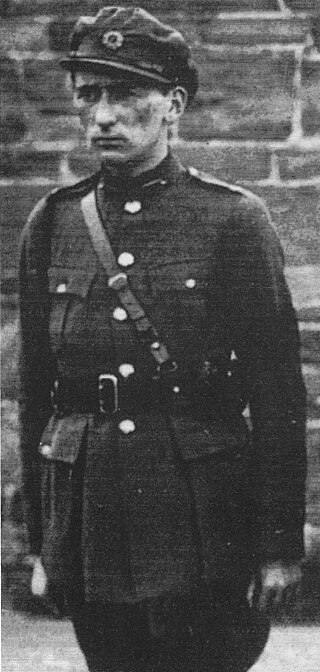
The Army Mutiny was an Irish Army crisis in March 1924 provoked by a proposed reduction in army numbers in the immediate post-Civil War period. A second grievance concerned the handling of the Northern Boundary problem. As the prelude to a coup d'état, the decisions made by influential politicians and soldiers at the time have continuing significance for the Government of Ireland.
Niall Charles Harrington, born in Dublin, was an Irish soldier, officer, military intelligence director, writer and broadcaster, campaigner for the memory of Charles Stuart Parnell and a union representative. His military career spanned the period from the War of Independence through to his retirement as a senior intelligence officer in 1959. During this time he wrote and narrated various historical features for different media. His Civil War memoirs were developed into a book, Kerry Landing, which was extended and published posthumously.
Reginald Walter Stenning was a British Army deserter who joined the Irish Republican Army (IRA), fighting on the anti-Treaty side in the Civil War. After being captured by Free State forces he was beaten and executed.
References
- ↑ Michael Collins's Intelligence War by Michael T. Foy ( ISBN 0-7509-4267-3), pages 214-218
- 1 2 3 "Free State Army - General Michael Collins". www.generalmichaelcollins.com. Retrieved 23 June 2017.
- ↑ I, Commemorating the Easter Rising Part; says, 1917-1936 | The Irish Story (10 April 2017). "Today in Irish History, 10 April 1923, Liam Lynch is killed". The Irish Story. Retrieved 23 June 2017.
{{cite web}}: CS1 maint: numeric names: authors list (link) - ↑ "March 1923 – The Terror Month". The Irish Story. 14 March 2011. Retrieved 23 June 2017.
- ↑ "The Irish Story". feeds.feedburner.com. Retrieved 23 June 2017.
- 1 2 3 Garret FitzGerald Reflections On The Foundation of the Irish State Archived 2011-03-19 at the Wayback Machine , University College Cork, April 2003
- ↑ The Times, Irish Mutiny. Officers Abscond With Arms, 10 March 1924